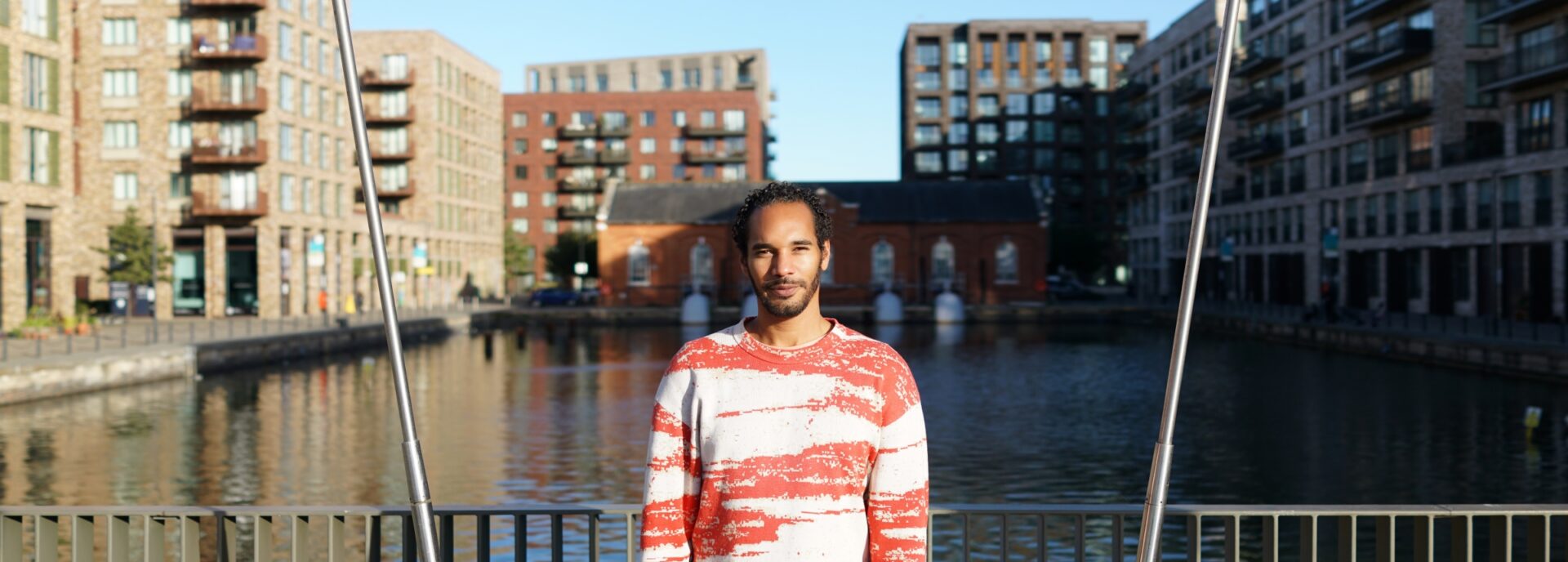
Hear from artist Adam Moore about outdoor spaces in urban and rural environments in Newham, and his experience on the Bow Arts x V&A East Fellowship at Royal Albert Wharf.
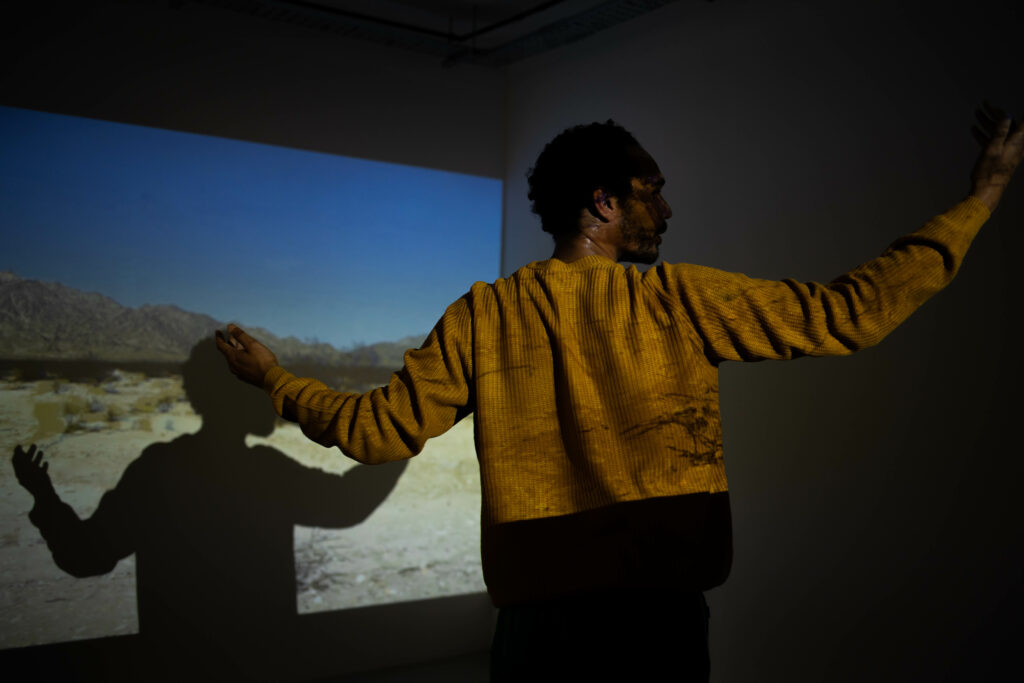
The V&A has partnered with Bow Arts to create two Artist Fellowships, offering funding and a workspace for artists at Bow Arts’ Royal Albert Wharf site, situated in the Docklands in East London.
The fellowships are site-specific, creating space to explore histories and practices of making, manufacturing, and materials in the Newham area ahead of the opening of the V&A East Museum and Storehouse in East London in 2025.
Bow Arts speaks to Adam Moore, the first artist in residence from October – January 2023.
Bow Arts has admired his previous work exploring ecologies and guiding the Transformative Futures Youth Collective at Camden Arts Centre, as well as his commitment to finding alternative ways of thinking, doing, and being that soften hardened institutions, stewarding life to thrive.
Hi Adam! Could you introduce yourself and your work?
Hi! I’m an artist from Newham, from two islands an ocean apart. Moving between archipelagic regions linked by colonialism across the global north-south divide in the 80s and 90s, I learned about my inherited cultures and the ecologies and geopolitical and historical contexts in the U.K. and the Caribbean. An embodied and pluriform creolisation shaped my identity and sense of self that continues to evolve today. My experience as a young carer born and based in London revealed the physical, emotional, and spiritual harm caused by frozen institutions within structures that were built by colonialism and that remained fixed in colonial rationality, and the need for local and global societal transformation across every dimension of life. I’ve had to prioritise caring, so my practice has been a slow but steady progression. Precipitating my work over two decades in human rights, non-profit, education, and government public services, everything that I’ve learned from these formative experiences I bring into my work as an artist.
I studied Dance, Theatre, and Professional Practice at Coventry University and graduated a Leverhulme Performing Arts Scholar (Gill Clarke Bursary) with an MFA in Dance Creative Practice from Trinity Laban Conservatoire of Music and Dance and Independent Dance at Siobhan Davies Studios. Practice-based and research-led I focussed on sustainability as a social change process that has as much to do with dreams, emotions, and intuitive notions as it does ecologies, geopolitics, materiality, and legislation.
Accumulating since 2020, my technical studio practice uses drawing and painting, photography and print, sculpture and ceramics, video, text, and sound aggregating into collections of works housing my choreography, dancing, and rituals in curated performance installations and design. Interested in the atemporal fabric and spirit of places, my work has expanded into post-studio practices making public art and site related interventions with architecture and infrastructures in rural and urban spaces where I create ambient schemes, transdisciplinary works focussing on the embodied and experiential, choreographic and relational, material and spatial. Ephemeral and precarious materials and processes repeat throughout my work across mediums and in my performances, exhibitions, public artworks, and interventions. And in my approach to collaboration and socially engaged forms partnering and inventing with communities of practice across gallery education and artist development programmes, conservatoires and higher education institutions, and my own curation, research, and facilitation. In my work, ecologies, materials, people, and places collaborate, invent, and perform too.
My work chimeras sprawling with life’s pluriformities to reimagine patterns in the world around me and the designs and histories from which they project, revealing realities of the past, present, and future, or of multiple transformative futures.

Your dance and performance practice is often site-specific, engaging in embodied ways with the place you are in. What was your experience like as you moved through Newham at Royal Albert Wharf?
I was born in Newham and when I’ve lived in London I’ve mostly lived within walking distance of the Docklands. I study outdoor spaces in urban and rural environments, sensing and moving within the architectural, elemental, aural, social, and spatial relations. I build a kinaesthetic and experiential understanding of my surroundings and observe the embodied resonances of particular architectural features and social and spatial dimensions, documenting tangible and intangible qualities using video, reflective writing, and field recordings, returning often to the spaces that I move through. I try to assimilate my experiences in depth, witnessing the movement of a place and the movement of my attention in that place. I develop relationships over long periods of time with environments where I can become local, noticing how life circulates within and flows through these sites; witnessing the rhythm of the seasons changing these environments, I develop a history with them. Working with or against their topography, I get to know myself within these places and these places within me. I allow these relationships to teach me, documenting my changing relationship to myself and place as these places change.
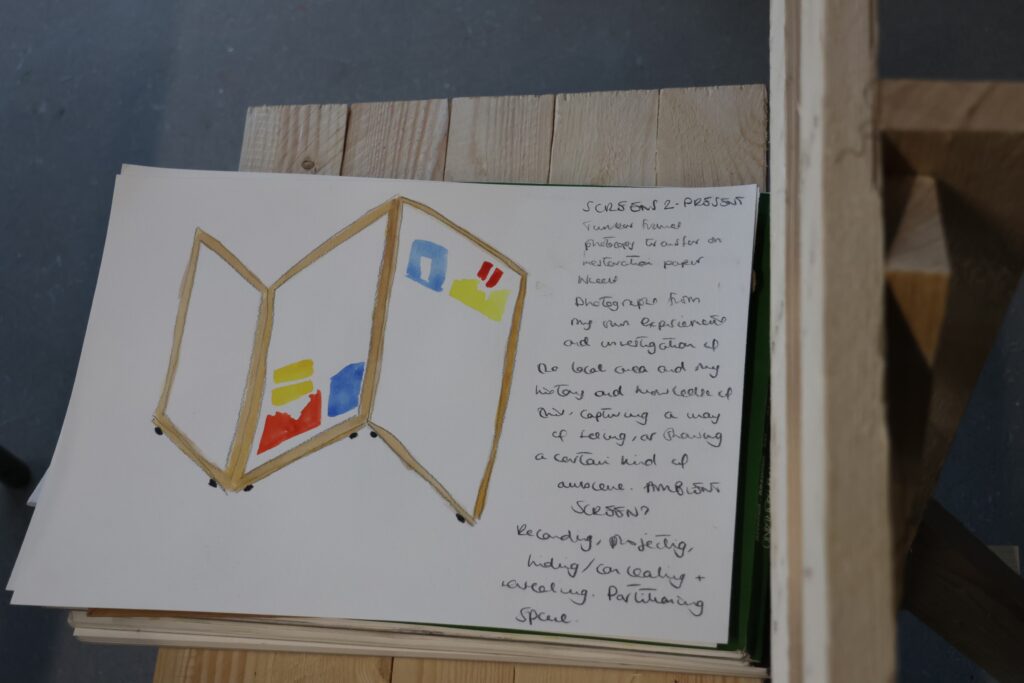
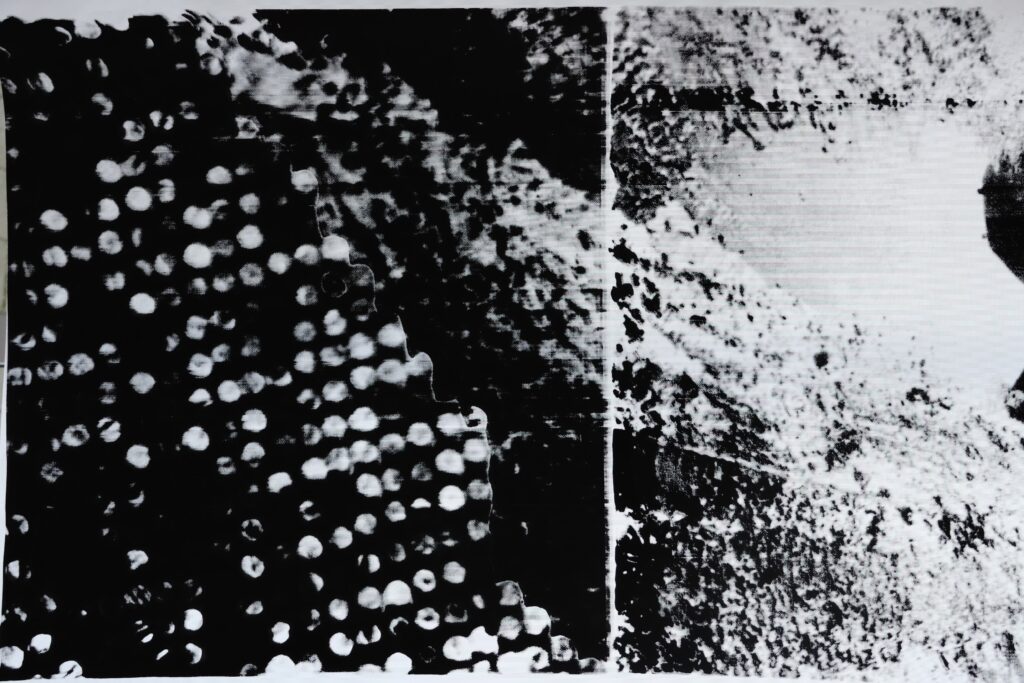
Some might say the outskirts of east London are neglected, but the changes from investment along its sprawling waterways, capacious skyline, and wild, untidy edges are rapidly accelerating. I’m not surprised anymore when a place I know intimately disappears behind or underneath an impassable enclosure, a new privatised development – as is the case with Royal Albert Wharf. In 2017 it was still possible to walk down and along the river’s edge that I’d jokingly refer to as the ‘Newham Riviera’. It has a unique sonic field that I really appreciate, the tranquillity of the Thames lapping on the shore – with actual sand – and over the rubble of the city crumbling into the water, punctuated by incoming and outgoing rumblings of planes arriving and departing from London City Airport on the other side of the docks. Now it’s not possible to step foot on the shoreline, new developments fence you inland. A lot of local people can’t afford to live in these new privatised developments, and perhaps won’t benefit from some of the new amenities and socioeconomic infrastructure. However, my view is that local people in these investment zones could take advantage of the spaces and places created for public use, finding what’s beneficial for them by starting there. Just a little further down from the Wharf is a pristine manicured lawn between two big glass buildings where I dance outside in the summer months, chat to the gardeners, different people who come to stop and sometimes ask me what I’m doing. A group of young roller skaters – teenaged Black boys and girls – glide up and down along the route to the Wharf, effortlessly cool. I know every feasible route around the docks, eastwards from Royal Victoria then right, over Connaught bridge, and through the narrowest corridor alongside Eastern Quay Apartments to join the Thames Barrier. It’s quicker to head east from there, but it’s more beautiful to double back across the bridge, or take the long loop clockwise back around the docks then east, following the hard edge straight up to Royal Albert Wharf. Crossing over Redgrave Bridge I often pause in the middle. Look out over the docks, turn round, look out over the wharf. Then swoop down and west, traverse the edge of the river itself. Sometimes I take the lift and sink down, crossing underneath and south, and pop up on the other side of the river in Woolwich. I know my way, following the river out even further east – it’s all connected, the water, so enduring with all the changes. Affinities between interior and exterior liquids, ecologies, and landmasses along the sprawling, membranous and fluid regions of regeneration on the periphery of the city at water’s edge are palpable.
Could you tell us about the free public programme you convened as part of the fellowship? We were inspired by the questions you asked as part of ‘Loose ends — Local Ecologies and Materials in Newham’. We would love to hear a few takeaways from the conversations you started!
I curated and organised a discussion series called Loose ends — Local Ecologies and Materials in Newham, bringing together panels of international artists, designers, architects, and cultural producers working across ecology and the built environment to explore local ecologies and materials in Newham. Hosted by the Department of Architecture and Visual Art (AVA) at the University of East London’s Docklands campus, together with invited panelists these moments invited people to gather and participate in discussions with the view of transforming notions of what it means to be local and work locally and artistically with people, places, ecologies, and materials. I’m still processing and thinking through these conversations, they played a huge role in the way I approached my work on the fellowship. These conversations will be available on my website soon. Listeners can tune in and come away with their own hot takes! I’m interested in finding ways to keep these conversations going – maybe a podcast – and invite more people to panels to discuss and expand on how we think about and work in relation to people, places, ecologies, and materials now.

One aspect of the V&A East x Bow Arts Fellowship asked you to explore histories and practices of making, manufacturing, and materials in Newham. The materials you work with are diverse and modern, including cyanotype print, drawing, photography, video, speculative fiction and sound. As part of your work on ‘Immineral Species’, you’ve even written sculptures out of words. Could you tell us about the materials and practices you developed during the fellowship?
The process was multilayered: each process I used and the materials I developed came out of experiences working at the wharf, with the V&A collections, and developing skills in collaboration with local artists, designers, craftspeople, and archives – and my own memories and experiences as an artist living and working in Newham. Since 2021 my locality has featured in commissions for Theatrum Mundi – the video essay Supercritical a Psalm which was then published in A Love Affair in 2023 – and in video work in my exhibition and performance series Bright Dynasty exhibited at Phoenix Art Space and Hypha Studios, London, and presented at Jerwood UNITe open studio at g39, Cardiff.
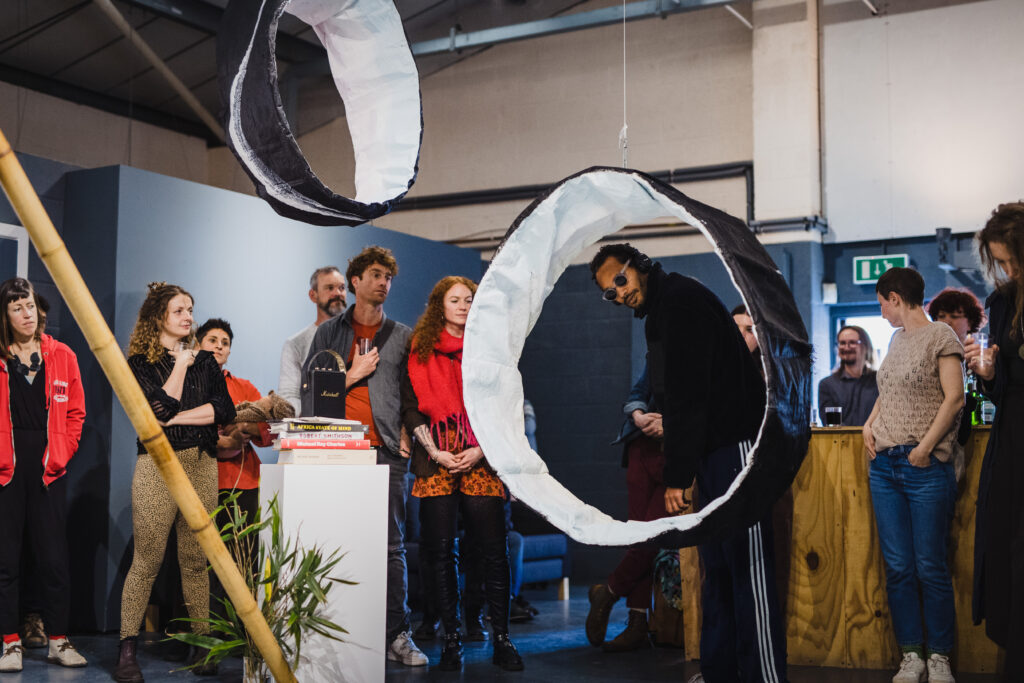
Newham boasts a broad and varied history of making and manufacturing from soap-makers, flour mills, oil storage, dye works, timber yards, munitions factories, the sugar-refiner Tate & Lyle, dockside boat makers and more, to more contemporary 90s architecture and infrastructure design – so I wasn’t short of inspiration! In the end I developed quite a lot of work materially, which was quite different for me. My practice became much more studio based although I was experimenting with pairing this with post-studio practices outdoors. In the end there was a distillation of sorts of the changing history, ecologies, and social context of the docks culminating in installation with print and furniture design, photography, drawing and painting, and sculptural/choreographic interventions outside that together through text and performance. For Still life, my public artwork at the end of Eastbourne Pier, commissioned in partnership with Eastbourne ALIVE in celebration of the Turner Prize 2023, I spent time observing people in Eastbourne and how they engaged with that site to help me realise an intervention that could work there without disturbing the unique character of the place. I used a similar process in how I approached my work on the fellowship.

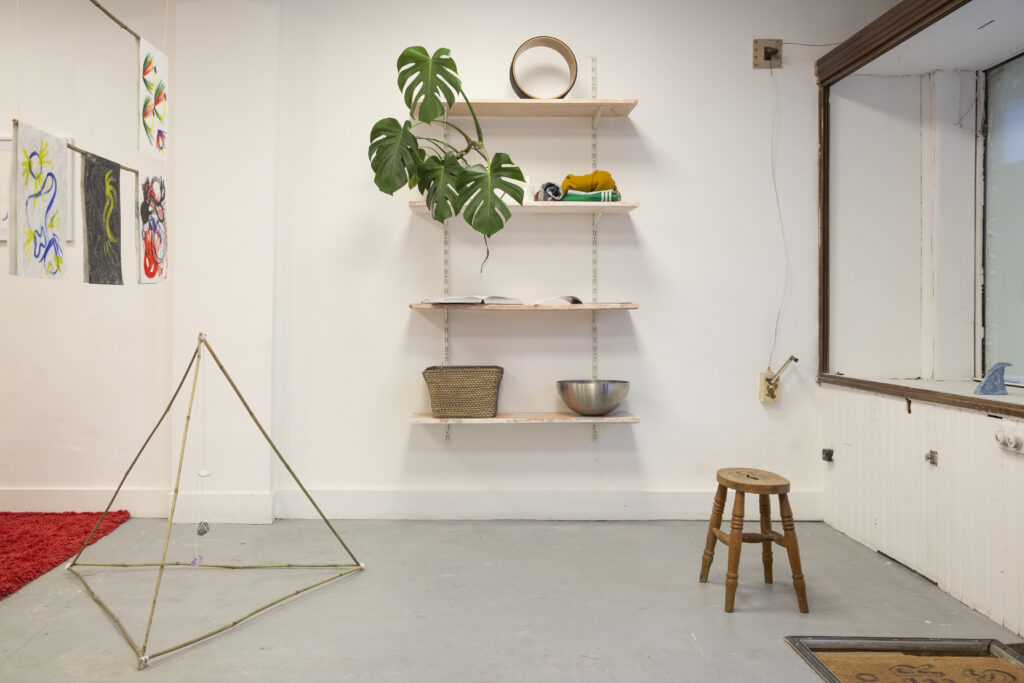
What emerged from the fellowship?
This fellowship gave me the chance to work in a place that I love, and I was able to realise all of my ambitions for public programme and the research and development of new work collaborating and partnering with local ecologies, materials, people, and places. I learned so much about Newham, the more I found out the more I realised there was so much I didn’t know, and this was so inspiring, and the Newham docklands continue to inspire my work and practice. I realised how important it was to me to be by the water, wherever it is that I live. I fell back in love with London after spending so much time in this part of the city, it was a meaningful way for me to work at the docks, and it reminded me of so many things that have helped keep me grounded – there’s nowhere like it and I’m excited to bring everything that I learned and the relationships that I developed into new projects. I was recently installing a new public art commission in Newham with the help of one of the local designers I collaborated with during the fellowship, and it was amazing to be able to work with them again. Hopefully more opportunities like that are on their way.
Finally, what are you paying attention to at the moment? What’s inspiring you, or making you think?
I’m thinking a lot about a new body of work and doing a lot of reading around (historical/political) geography; oceans and seas, islands and archipelagos; migration and transformation. I think I’m quite broad in my interests because I’m more fired up by the connections and movements between things, and making work that doesn’t dictate to people but leaves space for them to have their own experiences and draw their own conclusions. I’m thinking a lot about death and loss and the potential within these experiences I’ve had for resistance, rebirth, transformation, and opportunity.
More of Adam’s work can be found online on his website, or on Instagram. Keep up-to-date on the V&A East X Bow Arts Fellowship on the V&A East website and hear about upcoming opportunities on the Bow Arts community Instagram page.
More about Adam Moore
Adam Moore is an Anglo Caribbean artist from east London making dance and performance. Accumulating since 2020, his technical studio practice houses his choreography and dancing in design and installation and expands into post-studio practices making public art and site related interventions. He creates ambient schemes – unique collections of works across mediums that research, explore, and invite a witnessing of how we live, partner, and invent with life’s myriad pluriformities now, and other ways that we might, giving primacy to the embodied and experiential, choreographic and relational, material and spatial – in reference to the immediate surroundings of something and the pattern of systems and structures from which it projects. His work on the fellowship with collections and archives transcends photography and digital collage, video, ways of gathering, furniture design and print in collaboration with the unique socio-experiential pluriformities of industry, infrastructure, ecologies, and the built environment choreographing the Docklands’ past, present, and future.